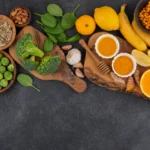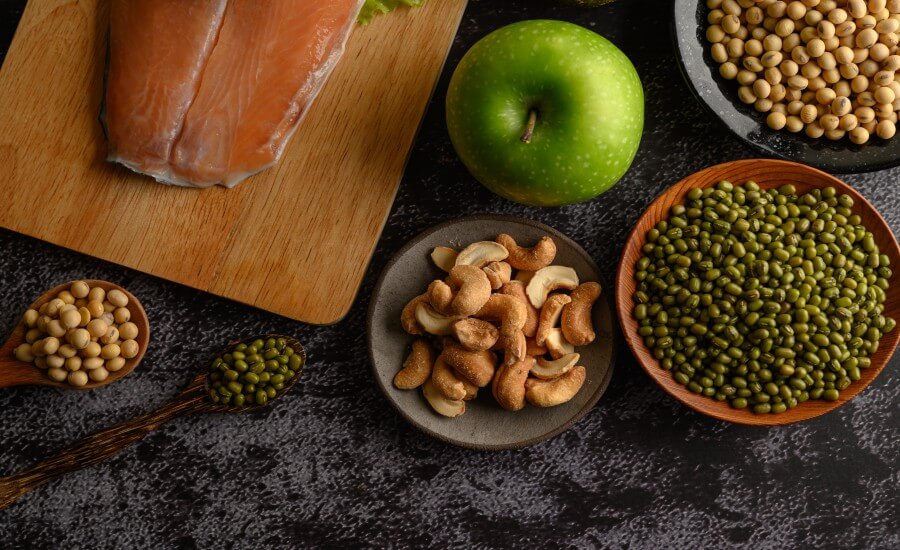The landscape of food is changing, and vegan meat alternatives are at the forefront of this transformation. Driven by ethical concerns, environmental awareness, health considerations, and culinary curiosity, plant-based vegan foods & products designed to mimic meat are rapidly growing in popularity and availability, including here in India. From ancient staples like tofu to hyper-realistic modern burgers, the options are diverse. This analysis provides a comprehensive exploration of these alternatives, examining their nutritional profiles, the ethical considerations driving their creation and consumption, their environmental footprint compared to animal agriculture, and the practical realities of cooking with them, offering insights relevant whether you’re in a bustling city or a town like Siyol.
Explore Delicious Vegan Meat Alternatives: A Flavorful Guide
LENS 1: Nutritional Analysis (Health Profile)

Vegan meat alternatives vary significantly in their nutritional make-up, ranging from minimally processed whole foods to more complex formulations. Understanding their profiles is key to making informed choices.
- Common Bases & Their Properties:
- Soy (Tofu, Tempeh, TVP/Chunks, Edamame): Excellent source of complete protein, often minimally processed (tofu, tempeh). TVP (Textured Vegetable Protein) or soy chunks, widely available and affordable in India, are made via extrusion and need rehydration.
- Wheat Gluten (Seitan): Very high in protein, provides a uniquely chewy, meaty texture. Not suitable for gluten-intolerant individuals.
- Pea Protein & Other Legume Proteins: Increasingly used in commercial alternatives (burgers, mince), offering good protein content and often fortified.
- Jackfruit: Young, unripe jackfruit has a fibrous texture perfect for mimicking ‘pulled’ meat, but is low in protein compared to other bases. Often needs flavour added. Popularized by brands like Wakao Foods in India.
- Mushrooms: Offer umami flavour and a naturally ‘meaty’ texture (e.g., Portobello), but lower in protein.
- Mycoprotein (Fungus-based): Less common but offers good protein and fiber.
- Nutritional Plant-based Meat Comparison:
- Protein: Many alternatives (tofu, tempeh, seitan, soy chunks, commercial products) offer protein levels comparable to or even exceeding animal meats. Whole legumes (dal, chana) are also excellent, affordable protein sources.
- Fat: Plant-based alternatives contain no dietary cholesterol. Saturated fat content varies – tofu/tempeh are low, while some commercial products use coconut or palm oil, potentially increasing saturated fat (though often still lower than fatty meats). Check labels.
- Sodium: Processed alternatives (burgers, sausages, deli slices, some commercial mock meats like those from Vezlay or GoodDot) can be high in sodium. Minimally processed options like tofu, tempeh, or plain soy chunks allow you to control the salt.
- Fiber: Plant-based alternatives contain dietary fiber, which is completely absent in animal meat.
- Micronutrients & Fortification: Animal meat is a source of B12, heme iron, and zinc. Vegan alternatives vary; whole foods like legumes offer non-heme iron and zinc. Many commercial products (check labels!) are fortified with Vitamin B12, iron, and zinc to match or exceed levels in meat. Tofu often provides calcium (if set with calcium sulfate).
- Processing Level:
- Ranges from whole foods (jackfruit, mushrooms) and minimally processed (tofu, tempeh) to more processed (TVP, seitan) and ultra-processed (many commercial burgers/sausages). Research suggests prioritizing whole or minimally processed foods generally, but processed alternatives can have a place. When choosing a vegan meat alternative, what nutritional factors (protein, sodium, fat, fortification) are most important to you?
Nutritional Deep Dive: Processed vs. Whole Food Vegan Meats
While a commercial vegan burger might mimic beef nutritionally (protein, fortified iron/B12) and be lower in saturated fat, it’s often considered ultra-processed and can be high in sodium. Minimally processed options like tofu, tempeh, or soy chunks offer good protein and allow complete control over added salt and fats. Whole legumes like lentils or beans provide excellent protein, fiber, and micronutrients at the lowest cost and processing level. The “healthiest” choice depends on context – alternatives can be useful transition tools or occasional conveniences, but a diet centered on whole plant foods remains the gold standard for many health outcomes.
Voice of Experience (Clinical Dietitian): “Plant-based meat and Vegan meat alternatives can be a helpful tool, especially for transitioning or for convenience. Nutritionally, they vary immensely. Look for adequate protein, check sodium levels, and favour options fortified with B12 and iron if using them frequently to replace meat. While often healthier than processed animal meats, remember that whole plant proteins like dal, chana, tofu, and tempeh are fantastic, often more affordable, and less processed choices.” – Dr. Rohan Desai, RD
LENS 2: Ethical Framework (The ‘Why’ Behind the ‘Meat’)

The drive to create and consume vegan meat alternatives is deeply rooted in ethical considerations.
- Reducing Animal Suffering: The primary ethical motivation is to provide alternatives that satisfy cravings or culinary uses typically met by meat, thereby reducing demand for animal agriculture and the associated animal suffering and killing. Philosophers like Peter Singer emphasize minimizing suffering, making alternatives ethically preferable to factory-farmed meat.
- Transition & Accessibility: Many advocates see these alternatives as crucial ‘bridge’ products, making it easier for people to reduce meat consumption or transition fully to veganism without feeling deprived of familiar tastes and textures. They can ease social situations and integration in mixed-diet households.
- The Mimicry Debate: Some within the vegan movement question whether closely mimicking meat reinforces the cultural centrality of meat as the ‘ideal’ food. Others argue mimicry is pragmatic, meeting consumers where they are. Tom Regan’s rights-based view might argue against viewing any being as a resource, potentially critiquing the very concept of ‘meat’ regardless of source, though plant-based is clearly preferable to animal exploitation.
- Production Ethics: Considerations include fair labour practices in farming base ingredients (soy, peas) and in manufacturing facilities. The entry of large corporations, sometimes with complex ethical track records in other areas, into the plant-based market also sparks debate. Supporting dedicated vegan businesses (like many Indian startups) versus large multinationals is an ethical choice for some consumers.
- Cultured Meat: While not technically vegan (uses animal cells initially), lab-grown meat is an emerging ‘alternative’ raising its own ethical debates about ‘naturalness’ and potential long-term impacts, though it aims to eliminate animal slaughter. Do you think vegan alternatives primarily help people move away from meat, or do they reinforce meat as the standard?
Hidden Benefits: Normalizing Plant-Based Choices
The increasing availability and quality of vegan meat alternatives in supermarkets and restaurants help normalize plant-based eating, making it seem less ‘other’ and more like a mainstream choice, which can accelerate dietary shifts for ethical, environmental, or health reasons.
Voice of Experience (Animal Rights Activist): “Vegan meat alternatives are strategically vital. They dismantle the myth that giving up animal products means giving up satisfying foods. By providing familiar formats, they lower the barrier to entry for countless people wanting to reduce animal suffering, making compassionate choices easier and more delicious.” – Anjali Sharma, PETA India Representative (hypothetical)
Critical Reassessment: Beyond the Burger
Is the intense focus on creating the perfect vegan burger or steak distracting from celebrating the inherent deliciousness and versatility of whole plant foods like lentils, beans, and vegetables? A balanced ethical perspective might encourage appreciating both innovative alternatives and traditional whole-food plant-based cooking.
LENS 3: Ingredient Science & Environment (Creating ‘Meat’ Sustainably?)

Creating convincingly ‘meaty’ textures and flavours from plants involves sophisticated food science, often with significant environmental advantages over animal agriculture.
- Texture Technology:
- Extrusion: High-moisture or low-moisture extrusion uses heat, pressure, and mechanical shear to realign plant proteins (soy, pea) into fibrous structures resembling muscle meat. This creates TVP/soy chunks and the base for many commercial products.
- Fermentation: Tempeh production uses fungal fermentation (Rhizopus species) to bind soybeans together, creating a firm texture and enhancing digestibility.
- Gluten Network: Seitan relies on the unique viscoelastic properties of wheat gluten to form a chewy, meat-like structure.
- Fiber Alignment: Jackfruit’s natural fibrous structure mimics shredded meat when cooked and pulled apart.
- Flavour Science: Creating ‘meaty’ flavour involves umami compounds (from yeast extract, mushrooms, tomatoes), specific fats for mouthfeel, and sometimes plant-derived heme (like soy leghemoglobin used by Impossible Foods) for a ‘bleeding’ effect and cooked meat flavour.
- Environmental Footprint: Life Cycle Assessments (LCAs) consistently show vegan meat alternatives have dramatically lower environmental impacts than conventional meats. Studies (like those compiled by GFI) indicate plant-based meats, on average, use:
- Significantly less land (e.g., ~79% less than animal meat average).
- Significantly less water (e.g., ~95% less consumption).
- Generate far fewer greenhouse gas emissions (e.g., ~89% fewer GHG equivalents).
- Cause much less water pollution (e.g., ~93% less marine eutrophication).
- Sustainability Nuances: While vastly better than animal meat, concerns exist about monocropping soy or peas for protein isolates, water usage in processing, and energy used in extrusion. However, these impacts are generally much smaller than those of animal agriculture. Traditional alternatives like tofu, tempeh, and legumes often have the lowest footprints within the category. Supporting local brands like Udaipur-based GoodDot, which focuses on plant-based alternatives, can also contribute to regional sustainable development. How important is the lower environmental impact when choosing between plant-based alternatives and animal meat?
Market Transformation Map Suggestion: A bar chart comparing the projected market growth rate (%) for plant-based meat alternatives versus conventional meat over the next 5-10 years, both globally and potentially highlighting India’s rapid growth.
Voice of Experience (Food Systems Environmental Scientist): “LCAs consistently demonstrate that shifting from animal proteins to plant-based alternatives offers substantial environmental benefits across key metrics – greenhouse gases, land use, water consumption. While optimizing the sustainability of plant protein sourcing and processing is ongoing, the comparative advantage over conventional livestock production is immense and undeniable.” – Dr. Alok Sharma, Environmental Research Institute
LENS 4: Everyday Practitioner’s Experience (Cooking & Eating)

Bringing vegan meat alternatives into the kitchen involves learning their unique properties and how best to use them.
- Working with Different Types:
- Tofu: Press firm/extra-firm tofu to remove water for better texture and absorption. Marinate for flavour. Crumble for scrambles (bhurji), cube for stir-fries/curries, blend silken tofu for creams.
- Tempeh: Steaming briefly before marinating can reduce bitterness. Slice or crumble. Great pan-fried, baked, or added to stews. Has a nutty flavour.
- Seitan: Can be bought pre-made or made at home (from vital wheat gluten). Chewy texture, great for stir-fries, ‘steaks’, or stews. Absorbs marinades well.
- TVP/Soy Chunks (‘Nutrela’ is a common brand in India): Essential step: Rehydrate in hot water or broth until soft, then squeeze out all excess water thoroughly to remove beany taste and allow absorption of flavours. Use in curries, keema, pulao, cutlets, stuffings. Very affordable and versatile in Indian cooking.
- Jackfruit (Kathal): Use young, green jackfruit (canned or fresh). Boil or pressure cook until tender, then shred. Sauté with spices and sauces for ‘pulled’ dishes (BBQ style or Indian curry/biryani).
- Mushrooms: Sauté for deep flavour. Use large Portobellos as ‘burgers’ or chop smaller ones into sauces/patties.
- Commercial Alternatives (GoodDot, Vezlay, Imagine Meats, Blue Tribe etc. in India): Generally cooked similarly to their meat counterparts (pan-fry burgers, brown mince, heat sausages). Follow package instructions. Availability varies – major cities and online retailers (Vegan Dukan etc.) have more options than smaller towns like Siyol, though basic soy chunks are widely available.
- Flavour is Key: Many alternatives (esp. tofu, TVP, jackfruit) are neutral canvases. Marinating, using strong sauces, and generous spices (especially crucial in Indian cooking) are essential for delicious results.
- Cost & Accessibility: Tofu, tempeh, soy chunks, and jackfruit (when in season/canned) are generally more affordable than many commercial branded alternatives. Legumes remain the cheapest protein source.
What’s your favourite way to cook tofu or soy chunks to maximize flavour?
Daily Impact: Easy Swaps & Meal Ideas
- Breakfast: Tofu Bhurji (scramble) instead of egg bhurji.
- Lunch: Sandwich with marinated baked tofu/tempeh slices or a chickpea ‘tuna’ salad.
- Dinner: Soy Chunk Curry, Lentil Shepherd’s Pie with TVP mince, Vegan Keema Matar using soy granules, Jackfruit Sabzi, Tofu Tikka Masala, Mushroom Stroganoff.
Voice of Experience (Indian Home Cook): “Soy chunks are a staple in my kitchen! They are cheap, high in protein, and soak up masala beautifully for curries or pulao. The trick is to boil them, squeeze out the water really well, then sauté or marinate them before adding to the dish. It makes a huge difference in taste and texture.” – Mrs. Radha Singh, Homemaker
Alternative Approaches: Whole Food Focus
Some prefer to avoid processed alternatives altogether, using whole foods like lentils, beans, mushrooms, eggplant (baingan), or walnuts to create hearty textures and ‘meaty’ flavours in dishes like burgers, bolognese, or fillings.
PERSPECTIVE INTERSECTION MATRIX
- Nutrition & Practice (Lens 1 & 4): Awareness of nutritional differences (processing, sodium, fortification) (Lens 1) informs which alternatives practitioners choose for regular vs. occasional use (Lens 4).
- Ethics & Availability (Lens 2 & 4): The ethical desire to reduce meat (Lens 2) is made easier by the practical availability and variety of alternatives (Lens 4), though accessibility issues (Lens 4) can pose ethical challenges (Lens 2).
- Environment & Choice (Lens 3 & 4): Understanding the significant environmental benefits (Lens 3) provides strong motivation for choosing plant-based alternatives (Lens 4) over animal meats.
- Science & Product Development (Lens 3 & 4): Food science innovations (Lens 3) create the products (burgers, mince, etc.) that practitioners use and evaluate based on taste, texture, and cooking performance (Lens 4).
- Cost & All Factors (Lens 4 & 1/2/3): Practical cost considerations (Lens 4) often lead consumers towards less processed, more affordable, and often more nutritious and sustainable options like legumes, tofu, or soy chunks (Lens 1, 3), aligning with ethical accessibility (Lens 2).
MISCONCEPTION ANALYSIS
| Misconception | Reality |
| Vegan meat alternatives are ‘fake,’ ‘unnatural,’ or full of ‘chemicals.’ | They are made from plant ingredients using established food processing techniques (like extrusion, fermentation). ‘Natural’ is subjective; ingredients vary widely. Check labels for specifics. |
| All vegan meats are ultra-processed and unhealthy. | The category spans minimally processed foods like tofu, tempeh, and jackfruit to more processed items like TVP/soy chunks and seitan, to highly processed commercial burgers/sausages. Nutritional profiles vary greatly; labels are key. |
| Plant-based meats don’t taste like ‘real’ meat. | Taste and texture vary significantly by product. Some aim for very close mimicry (often successfully), while others (like tofu or tempeh) offer unique textures and absorb flavours well. Seasoning and cooking methods are crucial. |
| Vegan alternatives lack sufficient or ‘complete’ protein. | Most vegan meat alternatives (esp. soy-based, pea-based, seitan) are excellent sources of protein, often comparable to animal meat. Soy protein is complete; combining various plant sources ensures all essential amino acids. |
| Plant-based meats offer no significant environmental benefit. | Life Cycle Assessments consistently show that plant-based meat alternatives have dramatically lower environmental impacts (land use, water use, GHG emissions, pollution) compared to conventional animal meats, especially beef and pork. |

KEY TURNING POINTS
- Ancient Traditions: Development of tofu, tempeh, and seitan in Asia centuries ago.
- Textured Vegetable Protein (TVP): Invention of extrusion technology in the 20th century allowing for shelf-stable, inexpensive soy protein chunks/granules.
- First Wave Veggie Burgers: Launch of early commercial frozen veggie burgers (often soy or grain-based) in Western markets.
- Hyper-Realistic Alternatives: Development of brands like Impossible Foods and Beyond Meat using advanced food science (plant heme, specific fat combinations) to closely mimic meat’s taste, texture, and cooking properties (c. 2010s).
- Market Boom & Mainstreaming: Entry of major food corporations, significant investment, increased supermarket availability globally, and growth of local brands in countries like India (e.g., GoodDot, Imagine Meats, Vezlay).

SYNTHESIS & RECOMMENDATIONS
Vegan meat alternatives represent a diverse and dynamic category, offering valuable options for anyone seeking to reduce or eliminate animal products from their diet. They range from ancient, minimally processed staples like tofu and tempeh to modern, highly engineered products designed for close meat mimicry. While providing substantial ethical advantages and drastically lower environmental impacts compared to animal meat, their nutritional profiles and levels of processing vary widely. It’s essential to read labels, considering protein, sodium, saturated fat, and fortification (especially B12). Using alternatives strategically – whether traditional soy chunks in an Indian curry, tofu in a stir-fry, or a commercial burger for convenience – can make plant-based eating easier, more varied, and socially adaptable. Prioritizing whole plant foods remains ideal for health, but alternatives play a significant role in the transition and enjoyment of a plant-powered lifestyle.
Recommendations:
- Explore the Spectrum: Try different types – from tofu and tempeh to soy chunks (widely available in India) and commercial brands – to find what you enjoy and suits your needs.
- Read Labels: Pay attention to protein, sodium, saturated fat, fiber, and fortification (look for added B12, Iron, Zinc).
- Prioritize Whole Foods: Use alternatives strategically but keep whole plant foods (legumes, vegetables, grains) central to your diet.
- Master Preparation: Learn key techniques like pressing tofu or properly rehydrating and squeezing soy chunks/TVP for best results.
- Flavour Generously: Especially for neutral bases like tofu or TVP, use marinades, spices (embrace Indian masalas!), herbs, and sauces to create delicious dishes.
- Consider Cost & Accessibility: Utilize affordable staples like soy chunks, tofu, or jackfruit (when available locally) more often than expensive imported brands if budget is a concern.
- Context is Key: Choose alternatives based on your goals – convenience, specific recipe replication, health focus, budget, etc.
FURTHER AREAS OF EXPLORATION
- A Comprehensive Guide to Cooking with Tofu (Firmness, Pressing, Freezing)
- Delicious Indian Recipes Using Soy Chunks (Nutrela) / TVP
- Tempeh 101: Fermentation, Health Benefits, and Cooking Methods
- Making Seitan (Wheat Meat) from Scratch
- Review and Plant-based Meat Comparison of Vegan Meat Brands Available in India
- The Science Behind Plant-Based Meat Flavours and Textures
- Cultured (Lab-Grown) Meat: Future Food or Ethical Quandary?












